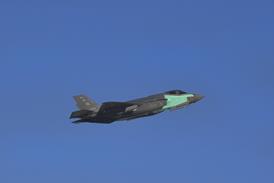A nanotechnology-based electronic device that could lead to tiny environmental sensors for manned spacecraft has been successfully tested in space.
The test on board the US Naval Academy's MidSTAR-1 satellite showed that the chip-based nanotechnology, called the Nano ChemSensor Unit, could monitor trace gases inside a spaceship and cope with the rigours of spaceflight.
On long missions in space nanosensors might detect minute amounts of harmful chemical contaminants that may build up gradually in the crew's air supply and alert them.
The tested sensor unit, funded by NASA's exploration technology development programme, uses carbon nanotubes coated with sensing materials that are designed for a specific chemical.
When that chemical touches the sensing material a reaction causes the sensor's electric current to increase or decrease. Because of their tiny size, nanosensors would have very low power needs and be durable.
"The nanosensor worked successfully in space. We demonstrated that [they] can survive in space conditions and the extreme vibrations and gravity change that occur during launch," says NASA Ames Research Center's Nano ChemSensor Unit's principal investigator Jing Li.
To conduct the test nitrogen gas containing 20 parts per million of nitrogen dioxide was injected into a small chamber.
The chamber also held a 12.7mm (0.5in) wide computer chip with 32 nanosensors on it. The test measured the change in electricity passing through the chip's nanosensors after the nitrogen dioxide and the sensing materials made contact.
Chemical sensors using carbon nanotubes and other nanostructures have been made to detect ammonia, nitrogen oxides, hydrogen peroxide, hydrocarbons and volatile organic compounds.
- Thales Alenia Space leads Paris space pack
Source: FlightGlobal.com























